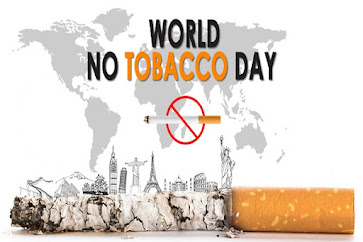World Lung Day 2022: Lung Health for All
The main function of the lungs is the process of gas exchange called respiration (or breathing). In respiration, oxygen from incoming air enters the blood, and carbon dioxide, a waste gas from the metabolism, leaves the blood. A reduced lung function means that the ability of lungs to exchange gases is reduced.
Respiratory disease is responsible for a major burden of morbidity and untimely death, and conditions such as tuberculosis, pandemic influenza and pneumonia are the most important conditions in world health terms. In addition, the increasing prevalence of allergy, asthma and chronic obstructive pulmonary disease (COPD) contribute to the overall burden of chronic disease in the community. By 2025, the number of cigarette smokers world-wide is anticipated to increase to 1.5 billion, ensuring a growing burden of tobacco-related respiratory conditions.
Respiratory illnesses affect people in all countries, but disproportionally in low- and middle-income countries (LMICs) where resources for research, prevention, and management are scarce. To address such inequity, we must look beyond medical care to the social and environmental determinants of health such as tobacco use, air pollution, climate change and poverty.
Five respiratory diseases are the commonest causes of illness and death worldwide - Chronic Obstructive Pulmonary Disease , Asthma, Acute Respiratory Tract Infection Or Pneumonia, Tuberculosis and Lung Cancer. The COVID-19 pandemic may have subsided, but its impact highlights a global lung health crisis that has not gone away.
An estimated 200 million people have COPD, of which about 3.2 million die each year, making it the third-leading cause of death worldwide. Asthma is one of the commonest non-communicable diseases globally affecting 262 million people. With more than 2.2 million new cases of lung cancer in 2020 and 1.80 million deaths, globally, lung cancer is responsible for 1 in 4 cancer deaths. Lower respiratory tract infection or pneumonia is a leading cause of mortality, accounting for more than 2.4 million deaths every year, particularly among those in LMICs. COVID-19 has dramatically increased deaths from pneumonia globally. In children under five years of age, pneumonia is the leading single cause of death outside the neonatal period. TB is a major burden with the World Health Organization’s annual global report finding that TB deaths have risen for the first time in more than a decade due to the COVID pandemic.
Lung disease is any problem in the lungs that prevents the lungs from working properly. There are three main types of lung disease. Many lung diseases involve a combination of these three types.
- Airway diseases: These diseases affect the tubes (airways) that carry oxygen and other gases into and out of the lungs. They usually cause a narrowing or blockage of the airways. Airway diseases include asthma, chronic obstructive pulmonary disease (COPD) and bronchiectasis.
- Lung tissue diseases: These diseases affect the structure of the lung tissue. Scarring or inflammation of the tissue makes the lungs unable to expand fully (restrictive lung disease). This makes it hard for the lungs to take in oxygen and release carbon dioxide.
- Lung circulation diseases: These diseases affect the blood vessels in the lungs. They are caused by clotting, scarring, or inflammation of the blood vessels. They affect the ability of the lungs to take up oxygen and release carbon dioxide. These diseases may also affect heart function. An example of a lung circulation disease is pulmonary hypertension. People with these conditions often feel very short of breath when they exert themselves.
How does Air Pollution affect the Lungs?
Breathing in air pollutants can irritate your airways and may cause shortness of breath, coughing, wheezing, asthma episodes and chest pain. Exposure to air pollution puts you at risk for lung cancer, heart attacks, stroke and in extreme cases, premature death.
Air pollution is a danger to lung health, particularly for: Babies and children, whose normal breathing is faster than older children and adults. The elderly, who may have higher respiratory rates. People who work or spend time outdoors. and People with heart or lung disease.
Key Message: Given the ongoing rapid expansion, development, and urbanization of India, the frequency of respiratory diseases and the associated economic impact may continue to rise, resulting in an increasing burden on scarce healthcare resources. The findings contribute to efforts to better understand the socioeconomic impact of respiratory disease and the development of tailored strategies such as early diagnosis of respiratory disease and optimization of treatment, to ensure appropriate targeting and allocation of funds to minimize the impact of these diseases in India.
Dr. Rajendra Nanavare
Chest physician Group of TB hospitals Sewri Mumbai.
Editorial manager Indian journal of Tuberculosis. Teacher, Lecturer and Examiner for Post graduate (post MBBS) Diploma and fellowship in Chest and TB. Tropical medicine and internal medicine College of physicians and surgeons Parel Mumbai.
Hon Professor of IMA Indian Medical Association for Academy of Medical Speciality
.png)



Comments
Post a Comment